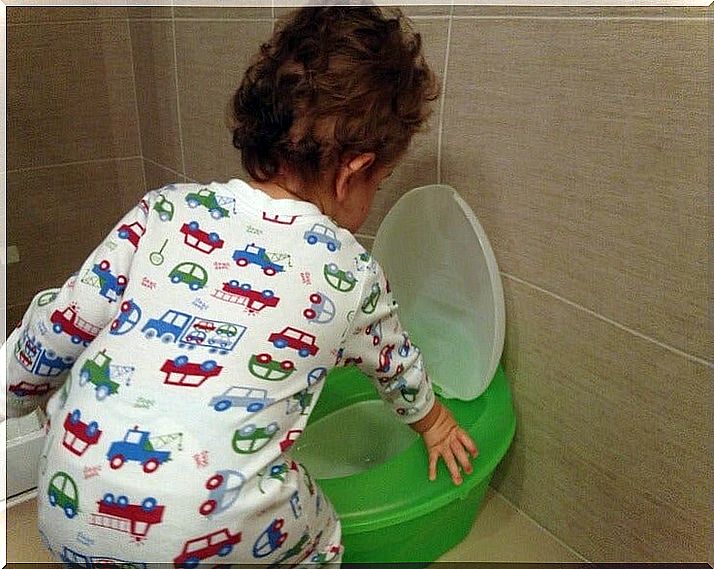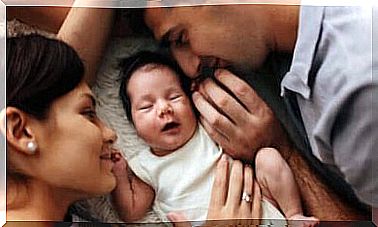How To Teach Children To Use The Toilet And Leave The Diaper?

You’ve changed more than two thousand diapers a year, and you’re probably eager to help your child take a new path. Because the most awaited moment by parents in the baby’s development stage is the time to teach how to use the toilet and leave the diaper.
However, leaving the diaper raises a series of doubts for parents. When to face learning? How do I know if my child is ready? Can we manage to overcome this new knowledge regarding personal hygiene?
Few parents are prepared for this time-consuming process. At the same time, some children learn in a few days, while many others can take months. Also, contrary to popular belief, the sooner they start training, the longer the child will take to learn.
Therefore, it is advisable that you consider some tips that will indicate that your child is ready to leave the diaper and learn how to use the toilet in order to soon be able to successfully complete the basic steps of training. Find out what they are in this article!
When to start trying?
There is no exact age when a child is ready to leave the diaper. However, most develop the necessary physical and cognitive skills between 18 and 24 months. Still, many parents prefer to wait until two and a half or three years.
Parents’ decision to wait a while to invest in learning how to use the toilet is correct. If you work hard before the child is ready, the process usually takes longer . Remember that before the first year a child does not control the sphincters and even those that show signs of being ready may not be.
Also, parents often often choose the summer to begin diaper training. This time of year is more practical and comfortable for these purposes because the baby can be out of diapers, speeding up urgent processes and avoiding the catastrophe that causes minimal escape.

Signs that the child is ready to leave the diaper
physical signs
- The child has enough balance and coordination to walk and even has stability when running.
- He no longer urinates little by little, but he does it in quantity and all at once.
- He began to have soft stools, but above all, well formed.
- It can stay dry for at least three or four hours.
behavioral signs
- The child is able to sit up and hold the position for between two and five minutes.
- She gets irritated when her diaper gets dirty.
- He is curious and tries to imitate adults when they go to the bathroom.
- Expressed from the body that is doing its needs (makes noises, crouches or warns).
cognitive signals
- Follow simple instructions.
- It has words capable of defining bowel movements and urine.
- It recognizes the time to go to the bathroom because it notices the physical signs. In fact, it is able to anticipate the fact.
- Can test the cups. In pediatrics, it is said that if you give the child two glasses, one of them filled with water, and the child can calmly pass the liquid from one glass to another without spilling, it means that the sphincters are ready to start the learning process.

Leave the diaper: step by step
Have the necessary elements
The first step is to choose, at the suggestion of the child’s pediatrician, a good potty or chair, or a seat that can be adjusted to fit the toilet in your bathroom. Whichever you choose, always check that it’s comfortable and safe. Also take the necessary steps so that the child has contact with the ground.
In the case of the toilet adapter, it is necessary to buy an additional stool so that your child can rest their feet on the floor, because this great little detail will not only help you get on and off the toilet easily, but will also give you firmness and stability, as well as greater ability to evacuate.
This phase requires a lot of time, patience and compromises with the little one. So let him decorate his chamber pot with stickers or play with him whenever he wants. And don’t forget to have underwear with your child’s favorite cartoons.
In the case of underwear, parents tend to choose between underwear or panties or cloth diapers, or the new disposable diapers that can go up and down as if they were underwear, because it makes it easier for the child to put them on and take them off on their own.
Explain the process, show how it’s done and say goodbye to the diaper
Now it’s time to get started! First, put the potty in an accessible and comfortable place, preferably somewhere where the child spends most of the day so that it is accessible, available for when the little one wants to use it.
Explain to your child that adults don’t wear diapers, but should do their toileting, emphasizing the connection between their bowel movements and the toilet. Even when he gets his diaper dirty, you can take him to the bathroom, sit him down and remind him to do it there.
Don’t worry or get angry if he doesn’t want to sit down and under no circumstances force him to sit or pressure him to speed up a process that takes time and dedication. Avoid making the child feel pressured, as it tends to slow down the process.

At this stage, explain to your child that you are teaching needs like Mom and Dad do. Remember that children learn by imitating adults. So the most effective way to help them in this lesson is to see yourself doing it.
When you show your child how to use the toilet, you might want to explain what you do and show him that you clean, get dressed, lower the lid, and finally wash your hands. Seeing you do this will help you understand the process.
And consider the following details, depending on your child’s gender: If you have a boy, it is recommended that he begin to pee sitting up and then teach him to urinate standing up. If it’s a girl, make sure you wipe from front to back to reduce the risk of urinary tract infections.
Motivate him to leave the diaper
Make it clear to your child that whenever he or she needs your help using the potty, toilet adapter, or getting up and down pants or underwear, he can turn to you. Also, remember that you can use it whenever you want.
Don’t forget that the longer your child goes without a diaper, the faster he or she will learn. Yes, even if you need to clean up the occasional accident. Take it easy and invite him to remain seated for at least a minute, keeping him company and even offering him storybooks.
Of course, don’t hesitate to flatter and praise your child every time he or she uses the pot correctly. That way, she will understand that learning involves an achievement. However, be moderate and don’t overdo the celebration, as your baby may start to get nervous or embarrassed after all the attention.
Deal with “accidents” calmly and in a good mood
Not every child easily masters the art of going to the bathroom alone for the first time without suffering another “accident”. In the face of each slip, don’t be angry, don’t punish or scold. It could be that your child may not yet have fully developed the muscles to handle urine and feces.
You can reduce the risk of leaks by dressing your child in clothes that are easy and quick to remove . In case you can’t avoid an accident, keep a positive and loving attitude while you’re cleaning, reminding them to use the restroom.
In short, sooner or later, your child will learn to leave the diaper and use the toilet alone, and this entire difficult phase will be nothing more than a reminder of another battle won as a dedicated and successful mother.







